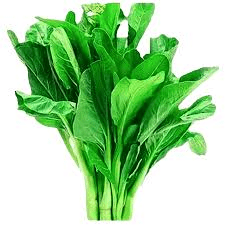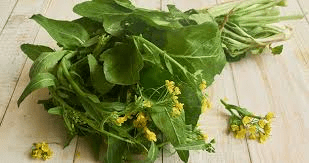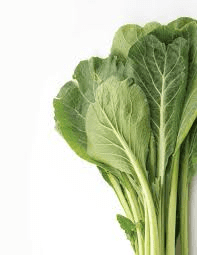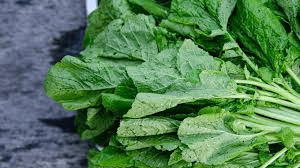Mustard plants, from the Brassicaceae family, are valued for their nutritional and culinary uses. Among their various parts, mustard leaves are particularly notable for their distinctive flavor and health benefits. These leaves, also known as mustard greens, are an integral part of the plant and contribute significantly to its overall value.
Mustard leaves are typically broad, lobed, and dark green, with a slightly wavy or serrated edge. They grow from the base of the plant in a rosette formation and can also appear on the flowering stalks as the plant matures. The leaves vary in size and shape depending on the mustard variety, ranging from small, tender leaves to larger, more robust ones.
Mustard leaves are highly nutritious, offering a range of vitamins, minerals, and antioxidants. They are particularly rich in vitamins A, C, and K, which are essential for maintaining healthy vision, boosting the immune system, and supporting blood clotting, respectively. Additionally, mustard greens contain significant amounts of folate, which is important for cell division and DNA synthesis.
Mineral content in mustard leaves includes calcium, potassium, and magnesium, which contribute to bone health, cardiovascular function, and overall cellular processes. The leaves are also a good source of dietary fiber, which aids in digestion and helps regulate blood sugar levels.
Mustard leaves have a distinctive, peppery flavor, which can vary in intensity depending on the plant’s growing conditions and variety. This bold taste makes them a popular ingredient in a variety of culinary traditions. They can be used fresh in salads, sautéed, steamed, or incorporated into soups and stews. The leaves can also be pickled or used as a flavoring in dishes, adding a unique kick to many recipes.
Cooking mustard leaves can mellow their sharp flavor and reduce their slightly bitter taste, making them more palatable for those who prefer a milder taste. The leaves are versatile and can be paired with various ingredients, including beans, grains, meats, and other vegetables.
Mustard leaves are relatively easy to grow and are well-suited to cooler climates. They thrive in well-drained, fertile soil and prefer full sun or partial shade. The leaves are typically harvested when they are young and tender for the best flavor and texture. As the plant matures, the leaves can become larger and more fibrous, which may affect their culinary use.
Regular harvesting of outer leaves encourages continuous growth and prolongs the harvest period. This method, known as “cut-and-come-again,” allows gardeners to enjoy fresh mustard greens over an extended period.
In addition to their rich nutrient profile, mustard leaves have been associated with various health benefits. They possess antioxidant properties, which help neutralize free radicals and reduce oxidative stress. This can lower the risk of chronic diseases such as heart disease and cancer.
Mustard leaves also contain compounds like glucosinolates, which are thought to have anticancer properties. These compounds may support detoxification processes and contribute to overall health maintenance.
Mustard leaves are a valuable component of the mustard plant, known for their nutritional richness and distinctive flavor. They offer a range of health benefits, including high levels of vitamins, minerals, and antioxidants. Their versatility in the kitchen makes them a popular choice for a variety of dishes, while their ease of cultivation ensures they are accessible to both home gardeners and commercial growers. Understanding the characteristics and benefits of mustard leaves highlights their importance in both culinary and health contexts.
The Economic Importance and Uses of Mustard Leaves

1. Culinary Use: Mustard leaves are used in various dishes worldwide, including salads, stir-fries, and soups, adding a spicy flavor and nutritional value.
2. Medicinal Use: Mustard leaves have medicinal properties and are used in traditional medicine to treat ailments such as colds, arthritis, and digestive issues.
3. Nutritional Supplements: Rich in vitamins A, C, and K, mustard leaves are often included in dietary supplements for their health benefits.
4. Animal Feed: Mustard leaves can be used as a nutrient-rich feed for livestock, contributing to animal health and productivity.
5. Fertilizer: Mustard plant residues, including leaves, can be composted to create nutrient-rich fertilizer for crops.
6. Natural Pesticide: Mustard leaves can be used to make natural pesticides, helping to control pests in gardens and farms.
7. Biofuel Production: Mustard plant residues, including leaves, can be converted into biofuel, providing an eco-friendly energy source.
8. Skincare Products: Mustard leaves are used in skincare products for their anti-inflammatory and antioxidant properties.
9. Dye Production: Mustard leaves can be used to produce natural dyes for textiles and other materials.
10. Packaging Material: Research is being conducted on using mustard leaves and other plant fibers as sustainable packaging materials.
11. Traditional Medicine: Mustard leaves are used in various traditional medicines to treat ailments like muscle pain, inflammation, and respiratory issues.
12. Flavoring Agent: Mustard leaves can be used as a natural flavoring agent in foods and beverages.
13. Preservative: Mustard leaves have preservative properties and can be used to extend the shelf life of certain foods.
14. Cosmetic Use: Mustard leaves are used in cosmetics for their potential skin benefits, including reducing inflammation and promoting skin health.
15. Antimicrobial Agents: Mustard leaves can be used in natural antimicrobial agents for food preservation and hygiene products.
16. Agricultural Use: Mustard leaves can be used as a green manure to improve soil fertility and structure.
17. Economic Crop: Mustard plants, including leaves, are a valuable crop for many farmers, contributing to local and national economies.
18. Research and Development: Mustard leaves are being studied for their potential uses in various industrial applications, including biotechnology and pharmaceuticals.
Read Also: The Different Types of Cropping Systems
The Products and By-products That Can Be Derived From Mustard Leaves

1. Mustard Greens: Fresh mustard leaves used in salads, stir-fries, and soups.
2. Mustard Leaf Powder: Made by dehydrating and grinding mustard leaves, used in cooking and seasoning.
3. Mustard Leaf Juice: Extracted from fresh mustard leaves, used in culinary dishes and as a health drink.
4. Mustard Leaf Paste: Blended mustard leaves used in sauces and marinades.
5. Mustard Leaf Extract: Used in supplements and cosmetics for its antioxidant properties.
6. Pickled Mustard Leaves: Preserved in vinegar, used as a condiment.
7. Dried Mustard Leaves: Dehydrated leaves used in soups and stews.
8. Mustard Leaf Chips: Baked or fried mustard leaves used as a healthy snack.
9. Mustard Leaf Tea: Brewed from dried mustard leaves, used for its health benefits.
10. Mustard Leaf Salt: A blend of mustard leaf powder and salt, used for seasoning.
11. Mustard Leaf Bread: Bread flavored with mustard leaves, often used for sandwiches.
12. Mustard Leaf Oil: Extracted from mustard leaves, used in cooking and aromatherapy.
13. Mustard Leaf Dye: Natural dye made from mustard leaves, used in textiles.
14. Mustard-Based Biofuel: Biofuel produced from mustard plant waste, including leaves.
15. Mustard-Based Animal Feed: Nutrient-rich feed made from mustard by-products.
16. Mustard Compost: Compost made from mustard plant waste, used as fertilizer.
17. Mustard Skincare Products: Creams and lotions containing mustard extracts for skin benefits.
Read Also: Shifting Cultivation: Features, Advantages and Disadvantages
Frequently Asked Questions (FAQ’s) About Mustard Leaves

1. What are the health benefits of mustard leaves? Mustard leaves are rich in vitamins A, C, and K, as well as antioxidants, which can boost health and wellness.
2. How can I use mustard leaves in cooking? Mustard leaves can be used in salads, stir-fries, soups, and as a garnish for various dishes.
3. Are mustard leaves safe for pets? Mustard leaves should be used with caution in pets’ diets, as they can be harmful in large quantities.
4. How should I store mustard leaves? Fresh mustard leaves should be stored in the refrigerator and used within a few days for the best quality.
5. Can mustard leaves help with skin conditions? Mustard leaves are used in some skincare products for their potential to reduce inflammation and improve skin health.
6. What are the different types of mustard plants? Common types of mustard plants include white mustard, brown mustard, and black mustard, each with unique characteristics.
7. How do I reduce bitterness in mustard leaves? Cooking mustard leaves with a bit of sugar or blanching them in boiling water can help reduce their bitterness.
8. Can I use mustard leaves as a natural pesticide? Yes, mustard leaves can be used to make natural pesticides to repel insects.
9. What is the nutritional value of mustard leaves? Mustard leaves are rich in vitamins A, C, and K, as well as minerals like calcium and magnesium.
10. How are mustard leaves used in traditional medicine? Mustard leaves are used in traditional medicine to treat various ailments, including muscle pain and respiratory issues.
Read Also: Benefits of Passion Flowers

